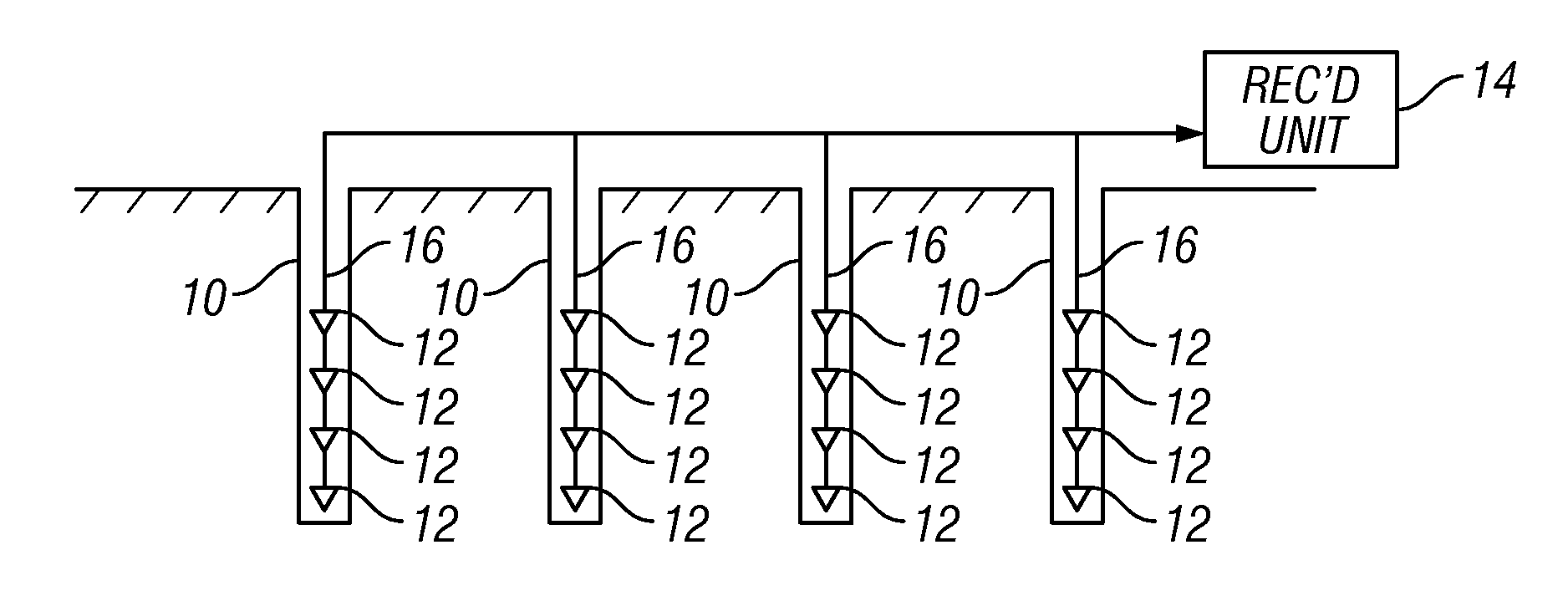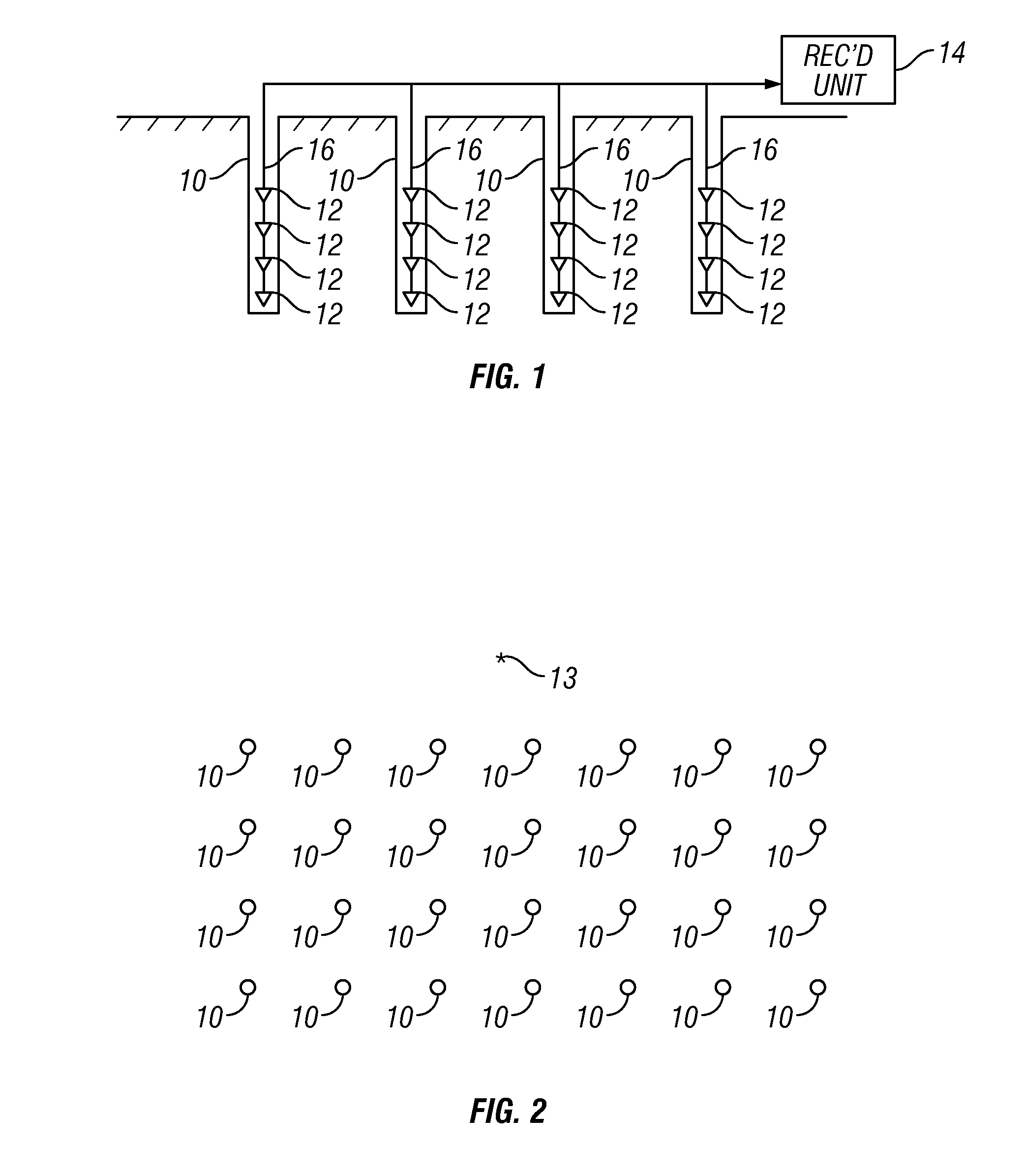Passive seismic data acquisition and processing using multi-level sensor arrays
a sensor array and data acquisition technology, applied in the field of passive seismic surveying, can solve problems such as increased signal-to-noise ratio
- Summary
- Abstract
- Description
- Claims
- Application Information
AI Technical Summary
Benefits of technology
Problems solved by technology
Method used
Image
Examples
Embodiment Construction
[0016]FIG. 1 shows a cut away view of one line of sensors in a two dimensional array of sensors according to the invention. A plurality of wellbores 10 are drilled to a selected depth below the Earth's surface. In practice, the depth is typically about 100 meters, although different depths may be used. For example, in the presence of very high levels of surface occurring noise, the wellbores may be drilled deeper. In some examples, existing wellbores may be used, for example, wellbores that are no longer used to produce or inject fluid.
[0017]A substantially vertically arranged array of seismic sensors 12 may be placed into each wellbore in the present example. The sensors 12 may be single component or multi-component (three sensitive axis) geophones, for example. The sensors 12 may be inserted by suspending them on a cable 16 and then filling the wellbore 10. In one example, the spacing between adjacent sensors is about 17 meters. The example shown uses four sensors 12 in each verti...
PUM
 Login to View More
Login to View More Abstract
Description
Claims
Application Information
 Login to View More
Login to View More - R&D
- Intellectual Property
- Life Sciences
- Materials
- Tech Scout
- Unparalleled Data Quality
- Higher Quality Content
- 60% Fewer Hallucinations
Browse by: Latest US Patents, China's latest patents, Technical Efficacy Thesaurus, Application Domain, Technology Topic, Popular Technical Reports.
© 2025 PatSnap. All rights reserved.Legal|Privacy policy|Modern Slavery Act Transparency Statement|Sitemap|About US| Contact US: help@patsnap.com



